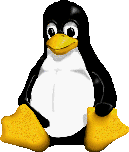|
Q1Embedded GUIs with Qt Embedded GUIs with Qt
|

|
|
Objectives
|
||||||||||||
- Theoretical course
- PDF course material (in English) supplemented by a printed version.
- The trainer answers trainees' questions during the training and provide technical and pedagogical assistance.
- Practical activities
- Practical activities represent from 40% to 50% of course duration.
- Code examples, exercises and solutions
- One PC (Linux ou Windows) for the practical activities with, if appropriate, a target board.
- One PC for two trainees when there are more than 6 trainees.
- For onsite trainings:
- An installation and test manual is provided to allow preinstallation of the needed software.
- The trainer come with target boards if needed during the practical activities (and bring them back at the end of the course).
- Downloadable preconfigured virtual machine for post-course practical activities
- At the start of each session the trainer will interact with the trainees to ensure the course fits their expectations and correct if needed
- Good knowledge of C++ language
- Any embedded systems engineer or technician with the above prerequisites.
- The prerequisites indicated above are assessed before the training by the technical supervision of the traineein his company, or by the trainee himself in the exceptional case of an individual trainee.
- Trainee progress is assessed in two different ways, depending on the course:
- For courses lending themselves to practical exercises, the results of the exercises are checked by the trainer while, if necessary, helping trainees to carry them out by providing additional details.
- Quizzes are offered at the end of sections that do not include practical exercises to verifythat the trainees have assimilated the points presented
- At the end of the training, each trainee receives a certificate attesting that they have successfully completed the course.
- In the event of a problem, discovered during the course, due to a lack of prerequisites by the trainee a different or additional training is offered to them, generally to reinforce their prerequisites,in agreement with their company manager if applicable.
Course Outline
- History
- Versions
- Licenses
- Components
- Qt Quick
- Hello world application
- Compiling and cross-compiling a Qt application
- The main mechanisms of Qt
- MOC (Meta Object Compiler)
- Main loop
- Signals and slots
- Introspection
- Asynchronous calls
- Creation of a Qt application on Linux
- Creation of Qt projects
- Compiling
- Main classes
- Base classes
- Main widgets
- Utilities
- The development tools for Qt
- QT Designer
- QtCreator
- Qmake
| Exercise: | Hello world application | |
- Basic widgets
- Labels, buttons, …
- Layouts
- Dialogs
- Custom dialogs
- Standard dialogs
| Exercise: | Writing an application combining various widgets | |
| Exercise: | Writing a custom dialog | |
- Threading model
- Launching a worker thread
- Synchronization
- Queuing work to the GUI thread
- Timers
| Exercise: | Writing a multi-threaded application | |
- 2D drawing
- Handling mouse, touch screen and keyboard events
| Exercise: | Moving an image on screen | |
- Model/View concept
- Model/View widget vs Standard Widget
- Standard models
- Writing a custom model
- Views
| Exercise: | Using a QListView | |
- Low-level graphism
- Frame buffer
- Open GL ES and EGL
- X Server
- Wayland
- Qt platform plugins
- EGLFS
- LinuxFB
- XCB (X server)
- Wayland
- Low-level input subsystem
- Input drivers
- Tslib
- Multi-touch protocol
- Configuring input in Qt
- Cross-compiling and installing Qt
- Build system
- Main options
| Exercise: | cross-compiling and installing Qt5 on an embedded board | |
- Presentation of Open GL
- Various Open GL versions
- Base concepts
- Notion of state in OpenGL
- Vertices and Triangles
- Transformations
- Drawing
- Textures
- Shaders
- OpenGL and OpenGL/ES
- Drawing in OpenGL
- Vertices and index arrays
- Drawing items
- Projections
- Viewpoints
- Transformation matrixes
- Loading and initialization
- Translations and rotations
- Save and restore (Matrix stack)
- OpenGL shaders
- OpenGL Shading Language (GLSL)
- Vertex shaders
- Fragment shaders
- Applying transformations
- OpenGL rendering model
- Surfaces
- Rendering operators
- Offscreen rendering
- OpenGL in Qt 5
- Raw Opengl with Qt OpenGL module (QGLWidget class)
- Qt wrappers above OpenGL ES of Qt GUI module (QOpenGLContext)
| Exercise: | Rotating cube | |
- Multimedia in Linux
- Gstreamer
- Multimedia in Qt 5
- QtMulimedia module
- Audio, Video Camera, MediaPlayer and Radio
| Exercise: | Playing a video file | |
- QML
- Elements and properties
- Javascript
- Main elements and properties
- User input, state, model and views, …
- Interactions between C++ and QML
| Exercise: | Hello world application with Qt Quick | |
More
To book a training session or for more information, please contact us on info@ac6-training.com.
Registrations are accepted till one week before the start date for scheduled classes. For late registrations, please consult us.
You can also fill and send us the registration form
This course can be provided either remotely, in our Paris training center or worldwide on your premises.
Scheduled classes are confirmed as soon as there is two confirmed bookings. Bookings are accepted until 1 week before the course start.
Last update of course schedule: 25 May 2022
Booking one of our trainings is subject to our General Terms of Sales


